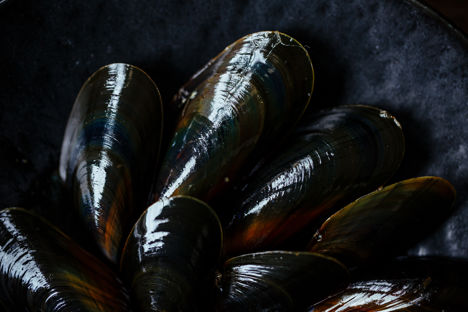Mussels are shellfish classified as a bivalve molluscs. The colour of the mussel is indicative of its gender; females have an orange flesh, whereas males are whiter.
They come into season from October-March, during which they are cheap and abundant in the UK. In their natural environment they grow around coastal areas, however they are commonly farmed in the UK in sheltered estuaries and bays.
Aside from being incredibly tasty, mussels are highly nutritious; full of vitamins and minerals as well as being rich in protein and Omega-3 fatty acids.
What to look for when buying mussels
All mussels should be brought fresh and still alive – a closed shell will indicate that this is the case. Mussels, like many other shellfish, spoil quickly, so you should always eat mussels on the day you buy them, or you leave yourself at risk of food poisoning.
To correctly store mussels, add to a bowl and place the bowl in the fridge covered with a damp tea towel. Don’t store in a bowl of water, as this will kill them.
How to cook mussels
Before starting to cook mussels it is necessary to properly clean and prepare them. This takes some time as each mussel needs to be checked individually.
Once checked, the mussels can be cooked. The classic method for cooking mussels is by steaming them. Heat a large heavy bottomed pan with a tightly fitting lid over a high heat, add the mussels and a splash of water and quickly replace the lid. Cook for 1-2 minutes until all the shells have opened. Discard any unopened shells.
Any remaining liquid makes a great addition to fish soups, stews and sauces.
What goes with mussels
Once the mussels are cooked in their shells, they can either be served as they are, as with Paul Ainsworth’s mussel broth recipe, or with a separately prepared sauce. Fragrant ingredients are often used in the sauce, such as ginger and garlic, as well as alcoholic liquids like white wine, beer or cider.
Alternatively, leave them to cool and remove them from their shells to serve as one part of a larger dish, see Shaun Rankin’s Linguine with mussels or Kevin Mangeolles’ Pan-fried sea bass with mussels, gnocchi and fennel for further inspiration.
Get in touch
Please sign in or register to send a comment to Great British Chefs.

